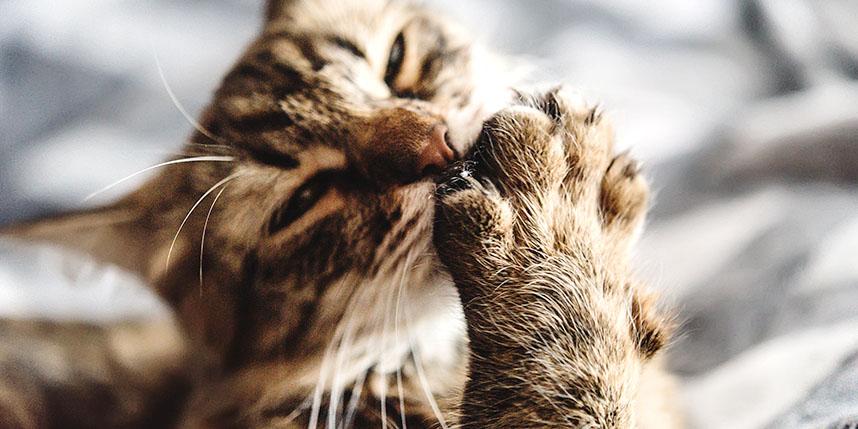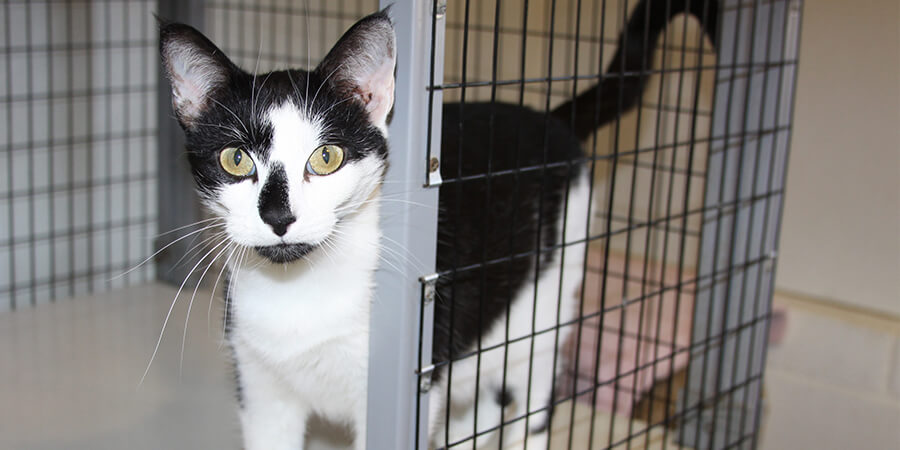ARE YOU USING TOO MUCH CAT LITTER?
Wondering how much litter to put in the box? Many cat parents actually use too much cat litter! Learn more about how much litter to use and how to spot problem behaviors.

4 Essential Grooming Tutorials for Cats
There are a lot of myths circulating about grooming cats, but it’s important to note that most basic cat grooming can be done at home with the right tools and preparation. Ensuring that your cat feels comfortable and safe will play a large role in turning your grooming routine into a relaxed time for the both of you. Put your cat’s fears at ease, so you can help your feline look and feel their best!
1. How to Trim your Cat’s Nails
Spend some time getting your cat used to the feeling of having their nails extended before you start trying to trim them. You can do this by calmly sitting them in your lap, and gently massaging the back of their paws until a nail is extended. After releasing their paw reward them with a treat. If your cat is especially anxious, you may want to spend time trying this with each of their nails on all four paws.
Once they are ready to have their nails trimmed, use these tips to make the process less stressful:

- Wait until your cat is feeling calm or tired to trim its nails. This may be after playtime or after a good meal
- Choose an empty room and a large chair where your cat can fit comfortably on your lap
- Try cutting some uncooked spaghetti with the clippers to get your cat used to the sound
- Gently massage the back of your cat’s paw, so that the nails extend forward
- Trim only the white part of the nail, as the pink portion is a highly sensitive area containing nerves and blood vessels
- Reward your cat with a treat afterward to create a positive association with nail trimming
2. How to Give Your Cat A Bath
As with nail trimming, you should try bathing your cat at a time when they are feeling most relaxed.

- Trim your cat’s claws beforehand
- Keep a mat on the bath floor so your cat feels stable and isn’t at risk of slipping
- Use lukewarm water, not cold
- Use a hand-held showerhead so you can bring the water to your cat, instead of moving the cat underneath a nozzle. If you don’t have one, you can try using a cup to slowly pour water over your cat
- Avoid getting water near or in their eyes, ears and nose
- Gently massage shampoo into the fur from neck to tail, in the direction of hair growth, avoiding the face
- If you need to clean your cat’s face, use a damp washcloth to wipe down their fur, and be careful to avoid their ears and eyes
- Wrap them in a warm towel and give them a towel massage to help them dry off
- Reward them with a treat, and some extra cuddles
3. How and when to groom your cat
Regular brushing will help to keep cats’ skin and coat healthy and will also help to prevent hairballs, so you should make brushing a regular part of your cat grooming routine.

- Check your cat’s coat to see if the skin is clear and the coat has a healthy shine
- Gently run a metal or rubber brush over their back, sides, stomach and tail to remove excess fur or dead skin
- Use corn starch or your fingers to gently pull apart knots or mats
- After combing through your cat’s hair, check their skin for ticks, fleas or any other irritants
- For short-haired cats, brush weekly. For long-haired cats brush every 2-3 days
4. How to apply Flea and Tick Medication on your cat
When it comes to treating fleas and ticks on your cat, spot-on treatments tend to be safe, convenient, and most effective. If your cat already has fleas, there are edible medications available, which are effective almost immediately at killing fleas before they can lay eggs.

- Apply by parting the hair on the back of your cat’s neck, and applying liquid directly to the skin, where your cat can’t lick or scratch
- If you spot fleas, vacuum daily and strip and wash sheets or other fabrics weekly
- For further treatment recommendations, contact your veterinarian
Cats tend to be skeptics, so slowly easing them into regular cat grooming practices is the best way to ensure success. Remember to always reward them with a treat, so they learn to associate these new practices with a positive experience. Lastly, if you ever encounter anything unexpected pertaining to your cat’s skin, coat or health – contact your veterinarian for further treatment advice.



